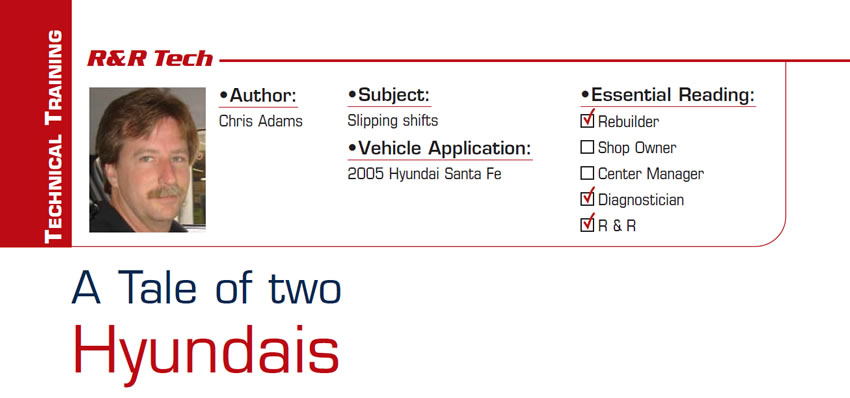Diagnosing an Overheating Condition
For the purposes of this article, we were working on a 2008 GMC Acadia that required internal repair of the transmission. In this specific instance, a reman unit was installed as the replacement. Similar to the diagnosis and repairing of this unit, the R&R is fairly straightforward also. Paying attention to things like cracked flex plates, reprogramming of the TCM, performing Fast Learn and getting the transmission to the correct fluid level are important items to check for a clean installation.
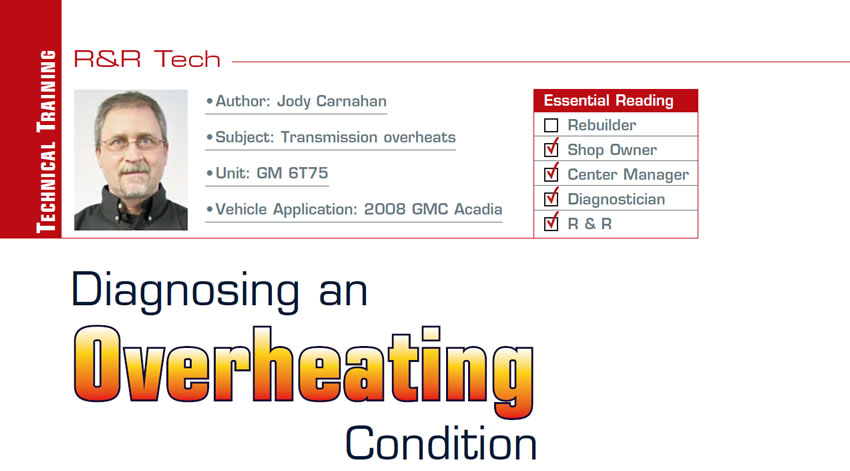
Don’t Overlook the Flex Plate
In the early 2000s, I was working as a transmission technician for a Dodge dealership in Omaha. I had been working there around five years. A customer brought in a 1998 Dodge Caravan equipped with a 3.0-liter V-6 and a 41TE (604) transmission. The customer complained that the vehicle had no power. He thought it was a transmission issue, so the Caravan was routed to me for diagnosis.
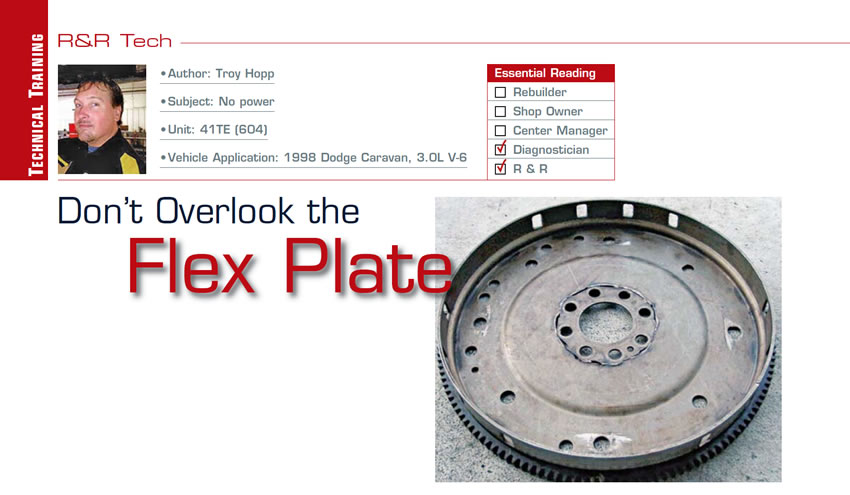
Sometimes I Wonder, ‘What Were They thinking?’
Case in point is a 1992 Ford Bronco (Figure 1) with a 5.8-liter engine and E4OD transmission. The vehicle came to our shop with shifting issues. The owner said he was driving along and all of a sudden it shifted down and then slammed back into gear, and then a short time later it shifted down again but this time would not upshift. He thought it was stuck in low, although it did not act up on the way to our shop that morning. The owner had recently bought this vehicle with some known issues. There was a rear-ABS lamp on and the Check Engine lamp was not on.
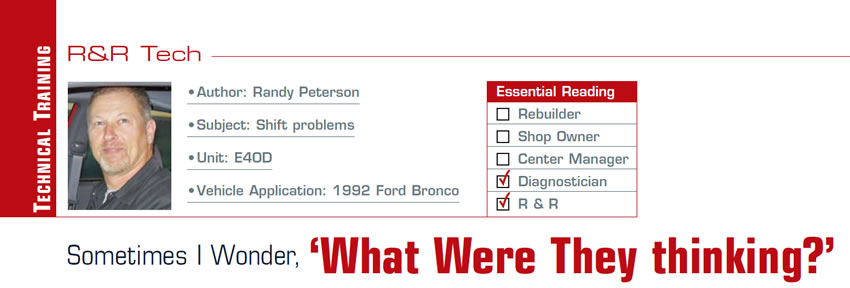
Continuity Conundrum
We spend a great deal of time helping installers with electronic-circuit codes for shift solenoids, PC-solenoid codes, input and output speed sensors, and pressure switches. Nearly all vehicles have issues with circuit codes. The focus of this article will be on Chrysler transmissions, as they seem to have more of these types of concerns than other vehicles.
Two- and three-pin harness connectors have been used for quite some time, and they have always been a primary source of circuit problems. The issues with them seem to be getting more prevalent since the vehicles that use them are aging. Loose pin fit and corrosion are the primary causes found with them, and cleaning with a heavy base (baking soda, for example) and a mild steel brush will usually dissolve the corrosion.
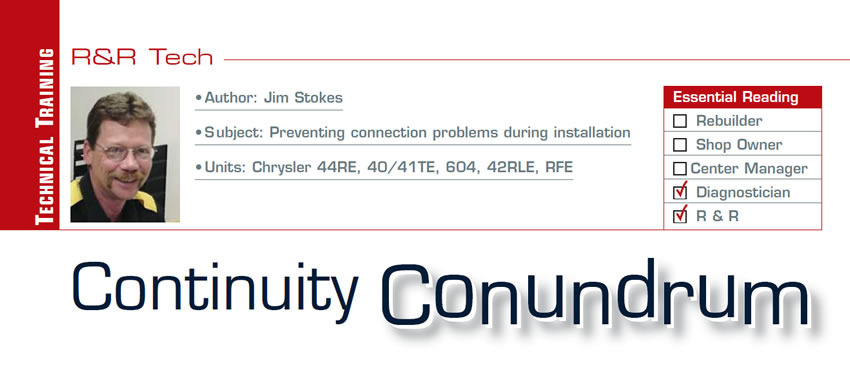
Less Time Spent Diagnosing
We sold a 4L60-E to a neighboring shop, which installed it and then brought it back to us because of a P0753 shift solenoid A code. The code would recur consistently and almost immediately when the vehicle was driven. However, the transmission would NOT go to failsafe; it would continue working fine (this is a key point).
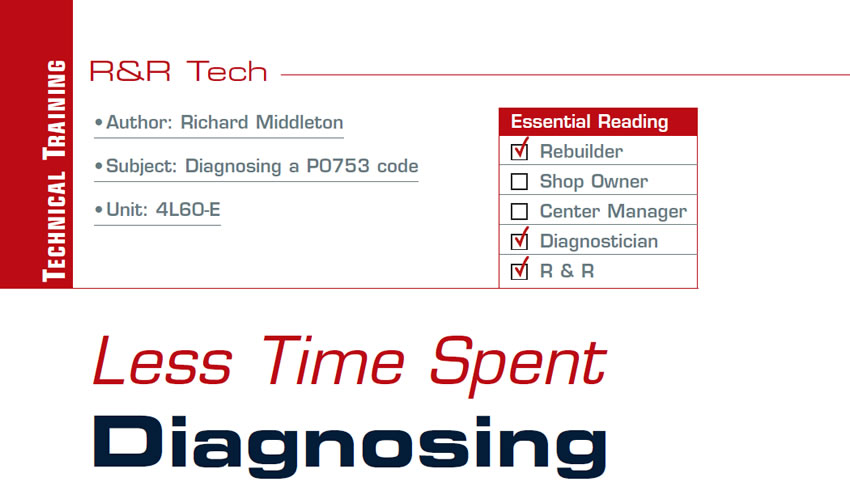
Diagnosing Explorer’s Shift Complaint not an Easy Task
A 2002 Ford Explorer came into our shop recently with a shifting complaint. The customer said it slipped or felt bumpy under fairly hard acceleration.
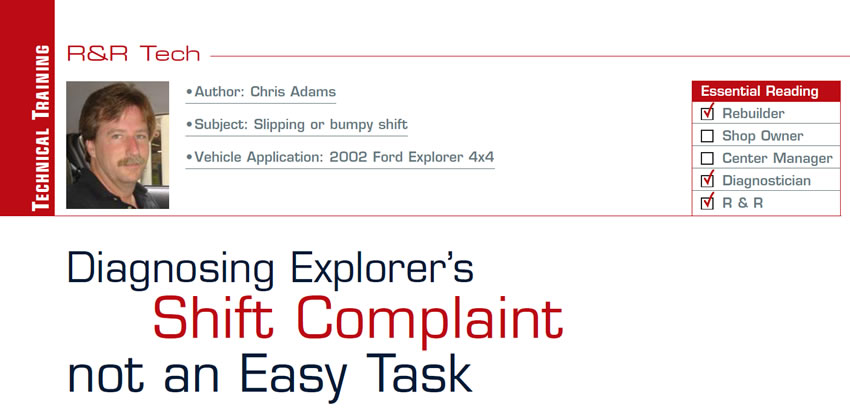
Included in the Quote
Let’s look at an example of what I’ve discussed. Let’s say that you were working on a 2001 Volvo V70 XC AWD, with an AW55-50SN transmission, and the vehicle had been towed in because it suddenly quit moving. You discovered that the transmission had a problem in the final-drive area but you found no other issues. All the clutches were like new, and there was no obvious wear in the valve body etc. That being said, the transmission was probably operating normally just before the final-drive component failed.
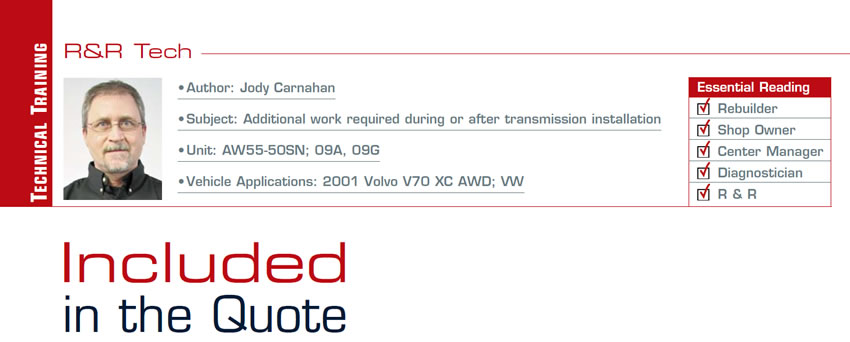
‘Why should I pay for diagnosis?’
A 2003 Lincoln LS with a 3.9-liter V-8 and 5R55S transmission came into our shop with a grocery list of codes stored, no power, and it didn’t shift. I scanned for codes, found P0715, 717, 718, 731, 732, 733, 734, 745 and P2106. As you can see it had turbine-speed-sensor codes, gear-ratio codes, pressure-control fault and a forced limited power from the TAC. My first thought was that the turbine-speed sensor had failed and as a result of continued driving set the other codes.
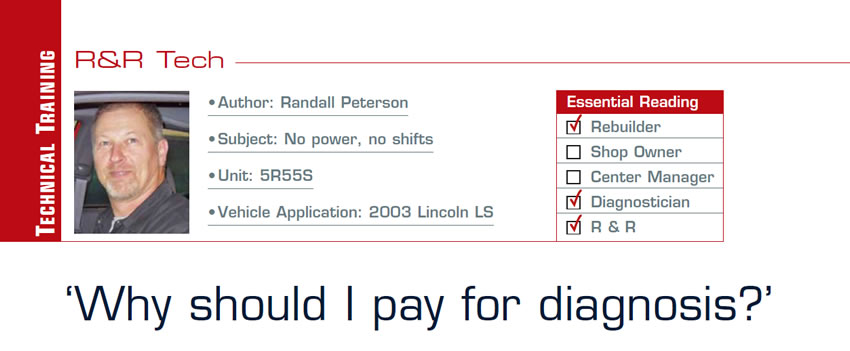
Top 10 Problems at Installation Part 2
Our company sells a large quantity of wholesale carry-out units in addition to performing in-house installations. We have a panel of technical advisers that provides guidance for both types of installations, and this article focuses on what we consider to be the top 10 issues that installers face today, based on the data we continually collect.
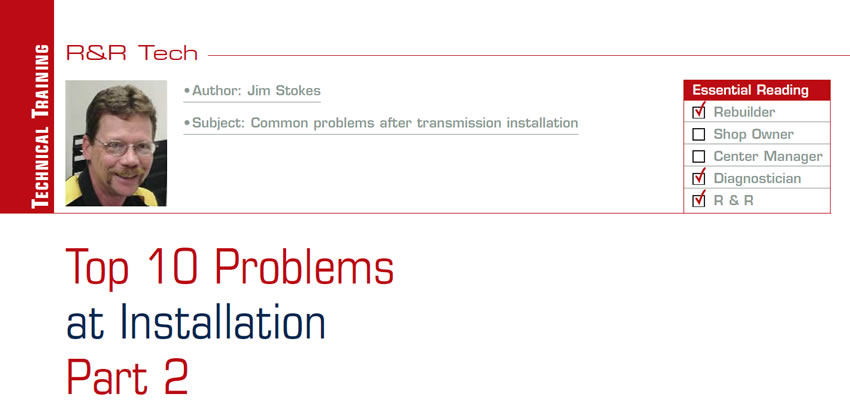
Top 10 Problems at Installation Part 1
Our company sells a large quantity of wholesale carry-out units in addition to performing in-house installations. We have a panel of technical advisers that provides guidance for both types of installations, and this article focuses on what we consider to be the top 10 issues that installers face today, based on the data we continually collect.
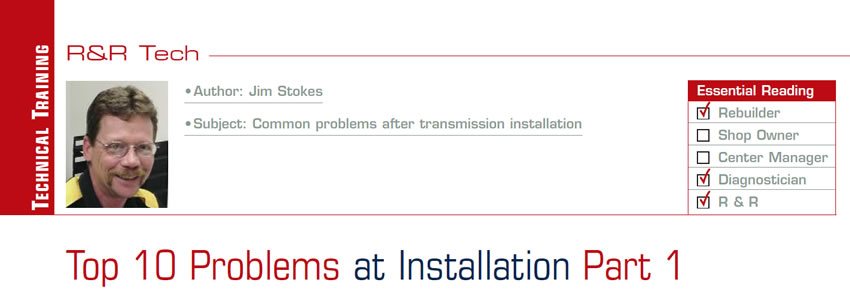
The Cost of Oil-Flow Charts
This story involves a complaint of no third gear on a 4T80-E transaxle. However, the lesson to be learned can be applied to almost all root-cause diagnosis and troubleshooting tasks.
The material for this article involves a unit that was built for our stock inventory and, at the dyno, had no third gear. This would normally lead me to believe that it had a stuck 2-3 shift valve or bad 2-3 shift solenoid. Simply pull the lower pan, swap out the solenoid and the problem should be fixed – or that was my first thought.
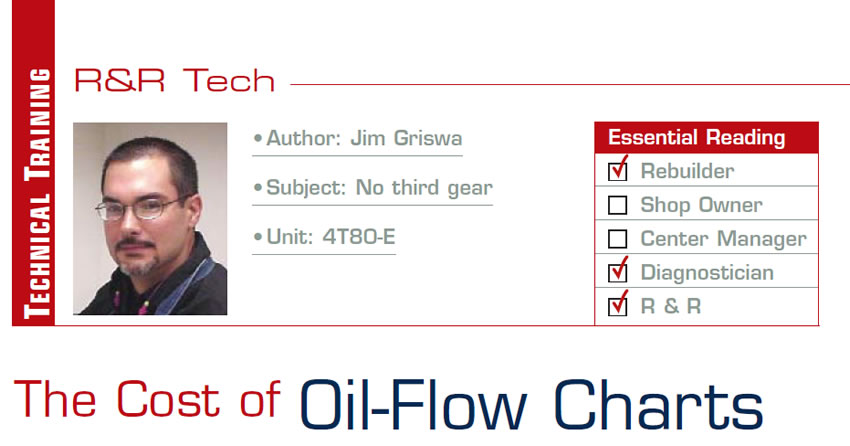
A Tale of two Hyundais
We recently received a call from one of our wholesale customers that had bought a carry-out transmission for a 2005 Hyundai Santa Fe. The vehicle had been out for a few months and was returned to the installer with a complaint of slipping shifts. Our customer had driven the vehicle and verified the complaint, removed the transmission and called us to send a replacement. At this point with the transmission already removed there was not much we could check so we sent out a replacement transmission.
